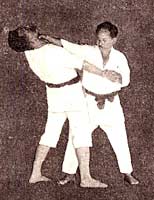- Joined
- Jun 10, 2016
- Messages
- 394
- Reaction score
- 0
That's called a "knockdown" in boxing, it's one of the first things I learned so I know it is commonly taught: parry downward jab and counter right. I agree with some of the posters saying this isn't the traditional JKD trapping but is "aggressive" parrying.
Trapping IMO is more than slapping things out of the way but actively preventing someone from moving the arm, but then I know next to nothing about kung fu. All I know I've learned from watching YT vidoes and reading Bruce Lee's book 20 years ago.
No, if you went around and asked a million people what a knockdown was in boxing the last thing they would think of is parrying a jab. Aggressive parrying? Uh, what? Parrying is parrying. What next, he was using "aggressive" evasion?


